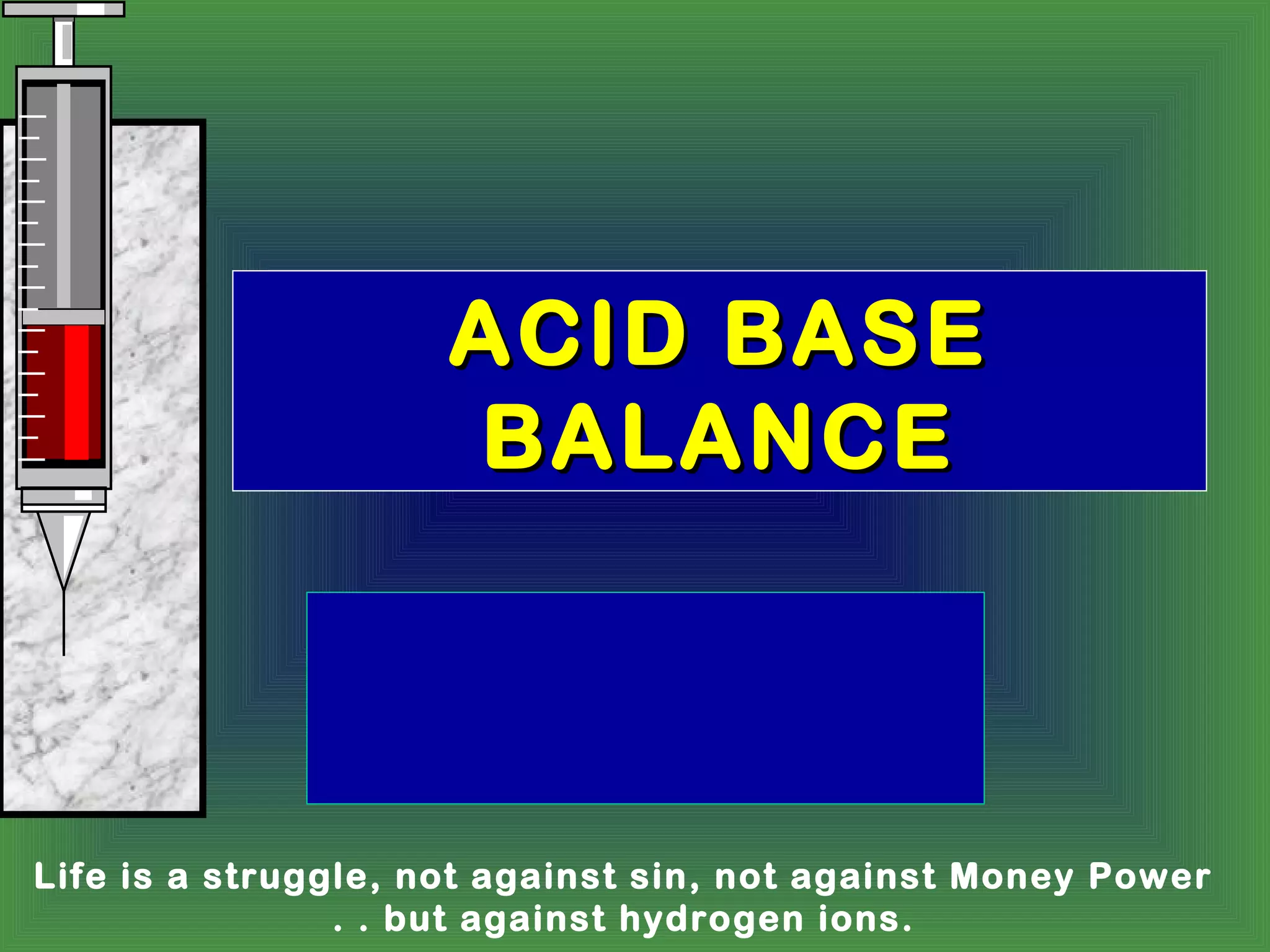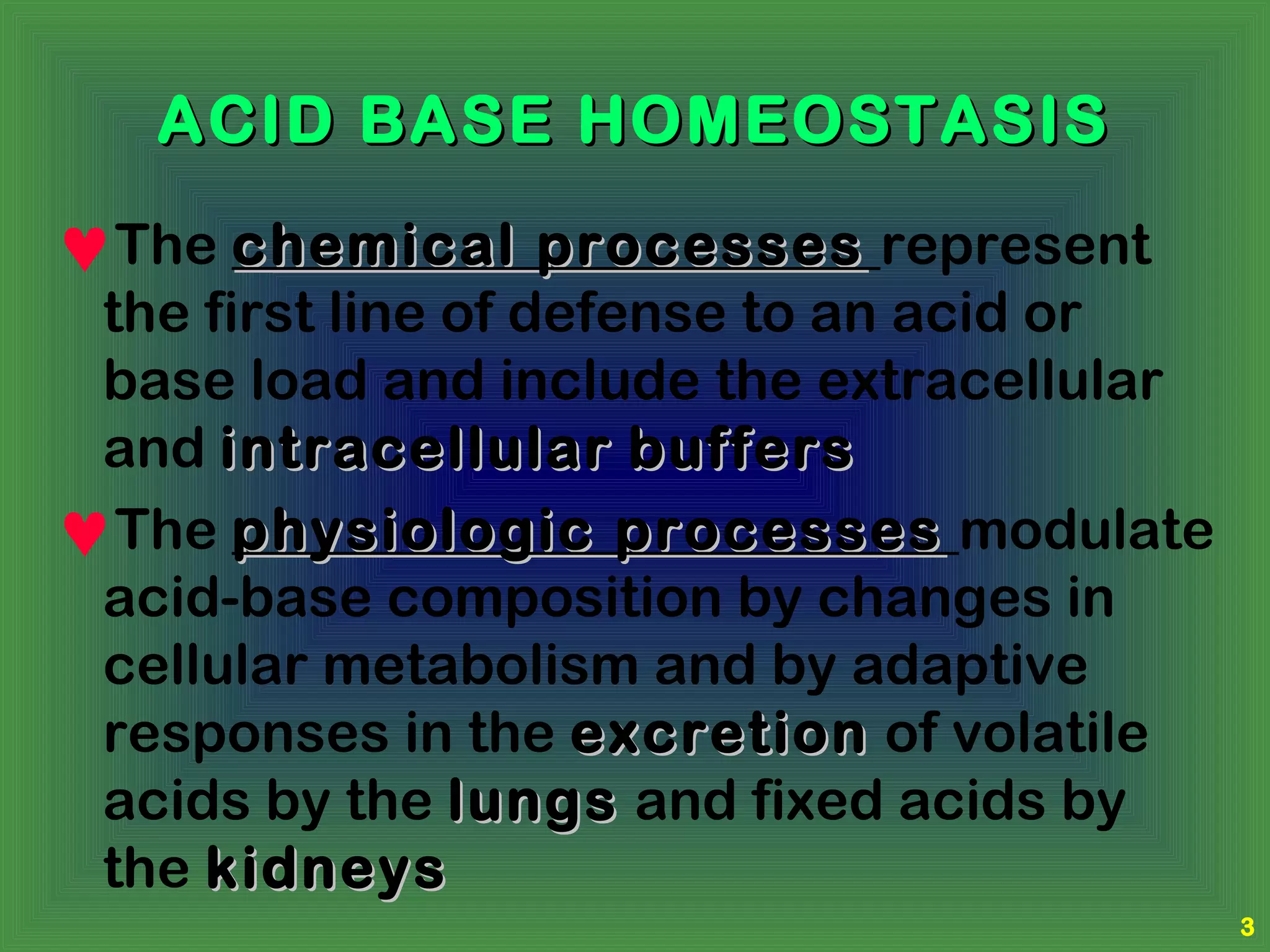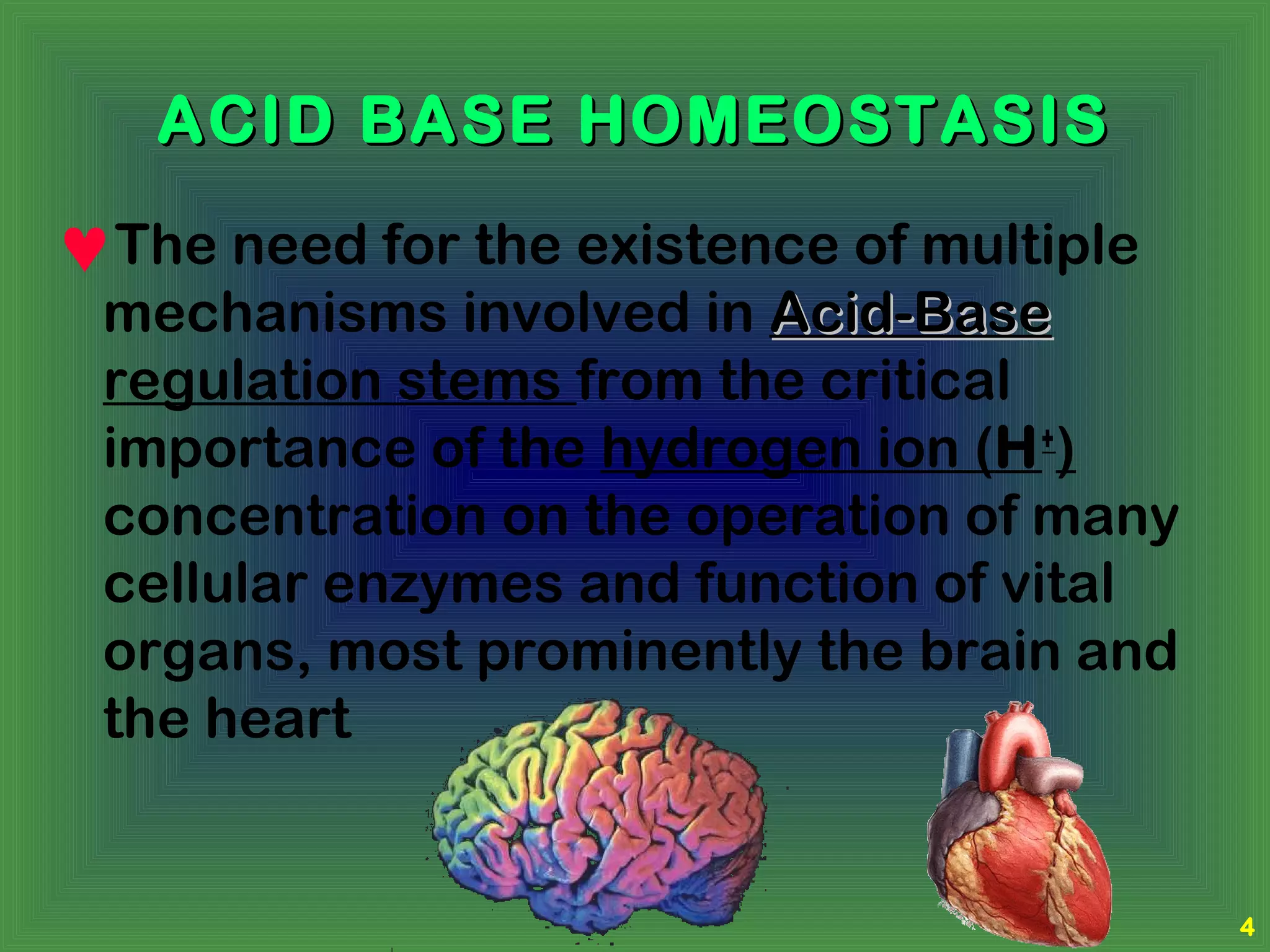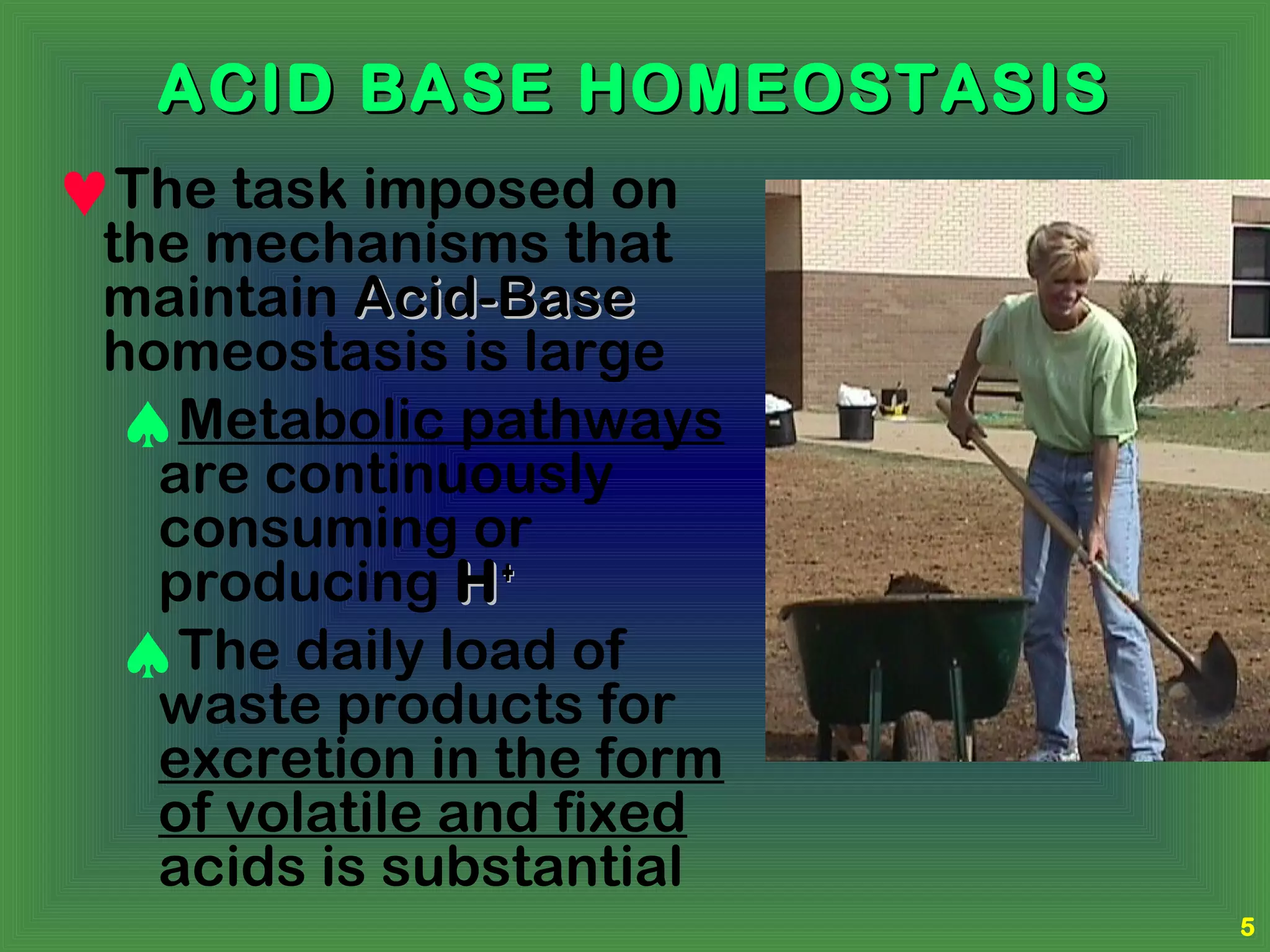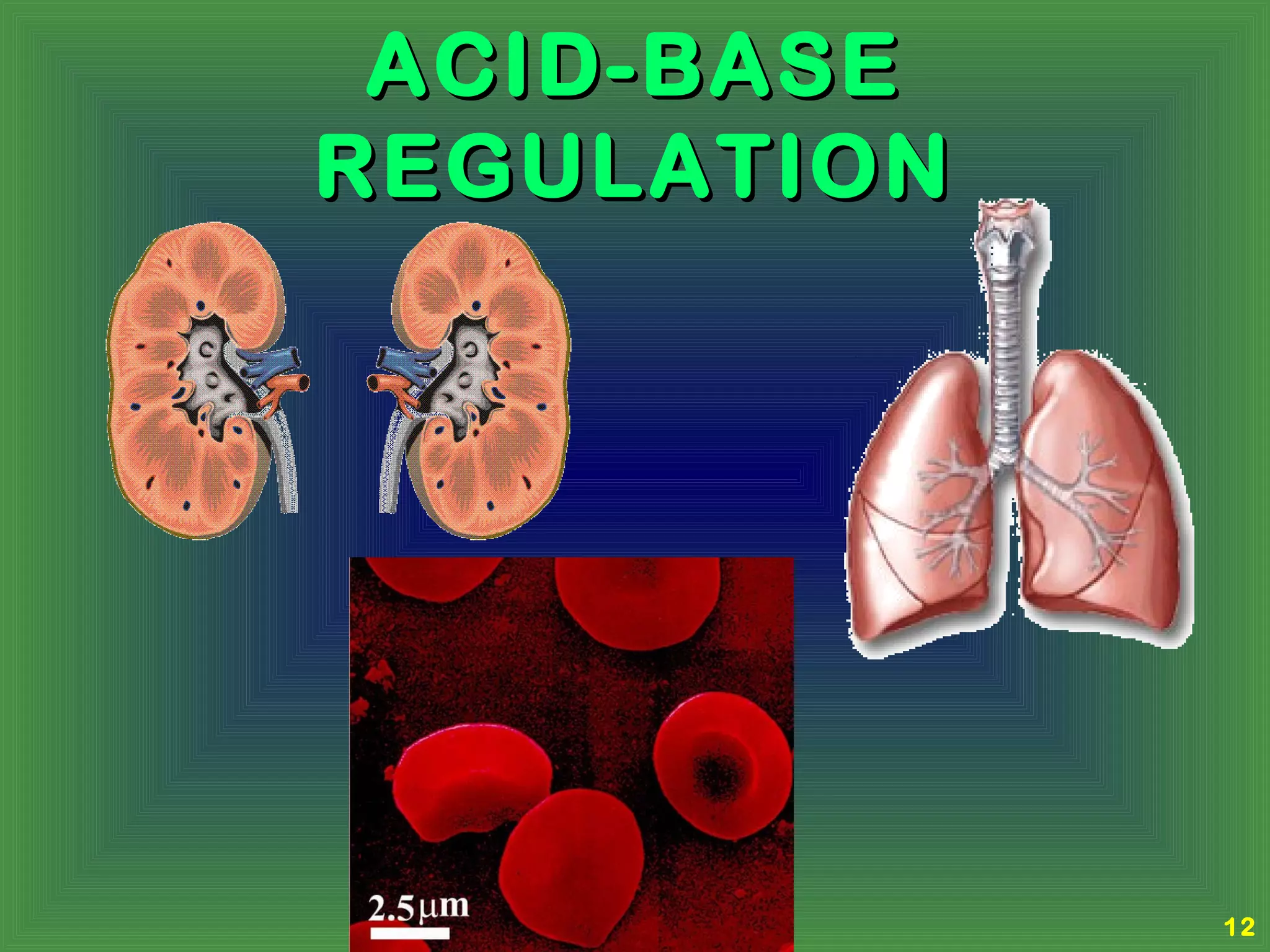This document discusses acid-base homeostasis and regulation. It explains that:
1) Acid-base homeostasis involves chemical and physiological processes that maintain the acidity of body fluids at levels that allow optimal body function.
2) Chemical buffers and respiratory and renal regulation work together to control hydrogen ion concentrations and maintain pH within a narrow range.
3) Disturbances in acid-base regulation can cause acidosis, a condition with too much acid, or alkalosis, a condition with too much base. Cell function and enzyme activity are strongly affected by pH changes.
